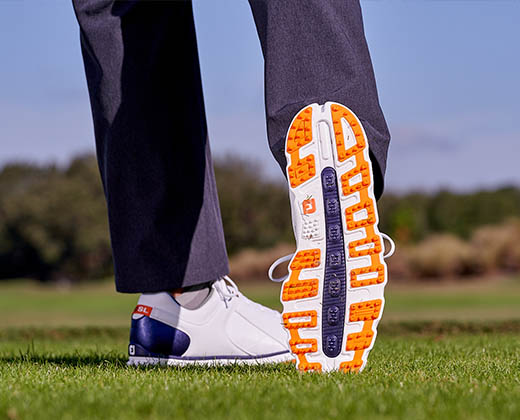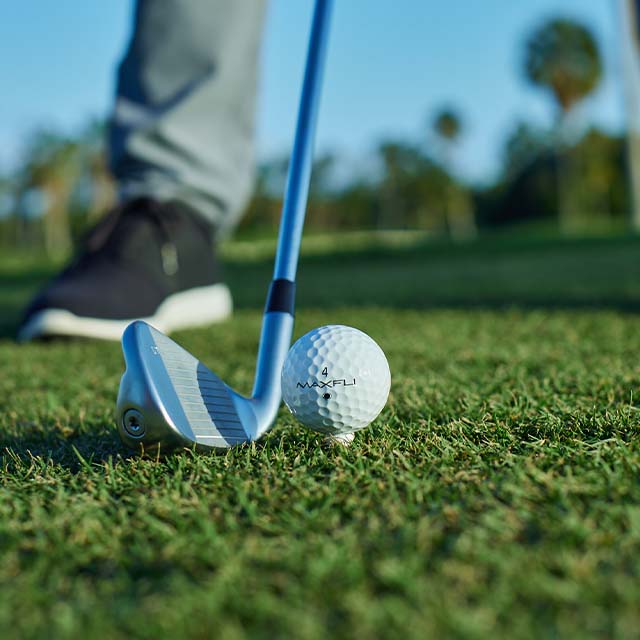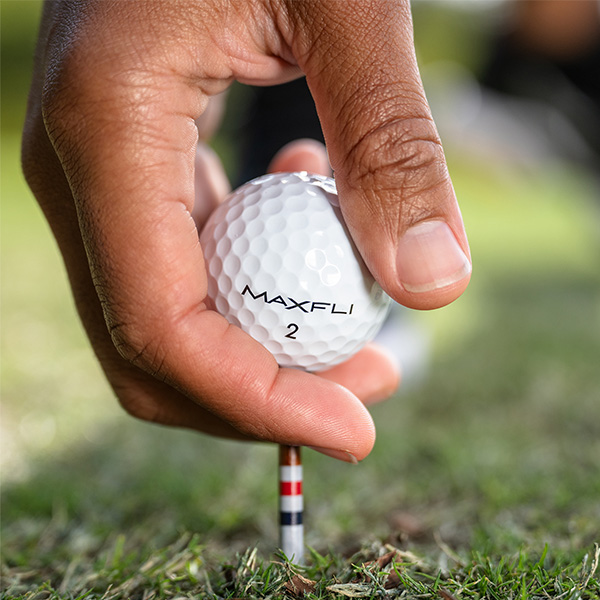Ready for the Course: How to Buy the Best Golf Driver
When you step up to the tee, your want a driver that delivers distance, trajectory and control. Here's what to look to deliver a strong opening shot.
Every successful round of golf starts with a strong tee shot. Make them count by gearing up with the right driver.
Drivers are commonly used on par 4 or 5 tee shots and are designed to be the club that produces the most distance. They also tend to be the longest club and have the lowest loft of any club in your bag. The driver is a club that golfers at every level need.
What exactly does your game need? We’re breaking down what to look for so you can make the best choice for you.
SIZE & MATERIAL
Drivers are designed with a large clubhead to provide a sizable sweet spot and forgiveness. While the driver has the largest hitting area of any club, there are various sizes available. The maximum size allowed by the USGA is 460cc (cubic centimeters). This tends to be the most popular size among amateurs and new players as it offers more forgiveness on off-center shots. But you can find smaller head sizes such as 440cc and 420cc that allow for improved shot-making ability. A smaller head size is generally popular with skilled players looking for workability in situations such as cutting around a corner.
The driver’s head is commonly made of titanium or composite materials. The material you choose depends on personal preference. Consider:
- Titanium: Tends to be strong, long lasting and lightweight. This allows for larger clubheads without additional weight, helping players to swing faster for more distance with a greater margin of error, thanks in part to a larger sweet spot.
- Composite: Combines several different materials into a single head. You will find lightweight materials like carbon in the rear of the clubhead to help reduce the weight of the driver. Combined with a titanium face, it can help produce optimal ball speeds. Heavier materials like tungsten combined with titanium can help increase a club’s perimeter weight.
MORE CARBON
Speaking of carbon, TaylorMade ushered in the Carbonwood Age with its Stealth driver and continued the trend with the new Stealth 2 in 2023. Stealth 2 promises "more carbon than ever before" with nearly twice as much carbon compared to the original carbonwood. Stealth 2 features a new Carbon Reinforced Composite Ring that allows for the redistribution of mass, providing more forgiveness and stability. Plus, Stealth 2 is even more forgiving thanks to a new 60X Carbon Twist Face with an enhanced version of Inverted Cone Technology to help maintain ball speed on off-center hits and increase forgiveness.
Callaway is also embracing the carbon trend with its new Paradym driver and industry-first 360-degree Carbon Chassis that removes titanium from the body. By combining a Triaxial Carbon crown and Forged Carbon sole, the body is now 44 percent lighter than all-titanium, allowing for enhanced ball speed and increased forgiveness.
SHAFT
The driver shaft is typically made of steel, titanium or graphite. Steel tends to be the heaviest but is often lower priced than the other two options. Titanium and graphite shafts are lighter and can help increase clubhead speed, which can lead to improved distance.
Shafts come with a variety of unique flexes that can affect your shot’s trajectory, accuracy and distance. Flexes available include extra stiff, tour, stiff, regular, senior and ladies.
WEIGHT
Drivers typically range from 275 to 310 grams, but some can be as light as 265 grams in total weight. Manufacturers have focused on making golf drivers lighter to help increase clubhead speed. Most golfers benefit from having a lighter driver to help produce the most distance off the tee.
LENGTH
The driver is the longest club in your bag. Men’s drivers tend to measure between 45 and 48 inches, while women’s drivers are typically between 43 or 44 inches. The size used depends on how a golfer feels in terms of overall control.
LOFT
The loft is the angle of the clubface and can affect trajectory and distance. Drivers come in various lofts, from 8 to 15 degrees. Knowing which loft to choose depends on your swing speed:
- Less than 60 MPH = 14-15 degrees of loft.
- 60 to 70 MPH = 12-13 degrees of loft.
- 70 to 80 MPH = 10.5-11.5 degrees of loft.
- 80 to 90 MPH = At least 9 to 10.5 degrees of loft.
- More than 90 MPH = Lowest loft available.
The lower the loft of the club, the lower the ball flight. The higher the loft on a club, the higher the trajectory. Golfers new to the sport looking for more flight will want to go with a loft that is higher, while a seasoned golfer may prefer a lower loft.
ADJUSTABILITY
When searching for the right driver, you may come across adjustable drivers. This type of club allows you to customize different features:
- Hosel: This feature allows you to change the loft of the driver to create different launch angles. You can also adjust the lie. The lie can influence if you hit a draw, which curves the ball right to left for right-handed golfers and the opposite for left-handed golfers, or a fade, which curves left to right for right-handed golfers and vice versa for left-handed golfers.
- Center of Gravity: Many drivers now feature moveable weights that you can adjust on the sole of the club. This allows you to tailor the club to hit a fade, draw or neutral shot.
MINI DRIVERS
Touring professionals and weekend warriors may not have a ton in common when it comes to their equipment needs, but both parties can agree that mini drivers have revolutionized launching the ball off the tee.
While getting every yard possible out of your driver is essential, hitting the big stick comes with the inherent risk of fluctuating accuracy. The mini driver offers a solution.
It brings the controlled accuracy of a fairway wood to the power of a driver. The slight sacrifice in yardage lost is made up for by the increased likelihood that your tee shot will come to rest in the short grass.
Ultimately, hitting a drive 300 yards is great — but not if the accuracy is unreliable and you’re punching out from the trees on your second shot. Wouldn’t you rather hit a mini driver 290 yards to the center of the fairway so you can attack the flagstick with your approach to the green?
Mini drivers are a hot item — inventory can be limited as popularity has recently soared. If you’re considering one, you’ll want to add it to your bag fast!
GOLF CLUB FITTING
And don’t forget to get fitted. For optimal consistency and accuracy, you should have your clubs customized to your body and swing. Visit the PROS at DICK’S Golf Services to receive help finding your optimal set makeup, loft angle, lie angle, shaft type, shaft length, grip size and more.
The driver is one of the most commonly used and important clubs for golfers at every level. By finding a driver that fits you and your skill level, you will be one step closer to a successful day on the course.
Once you find the driver that fits your game, you will be ready to put it to use. Learn how to properly hit a tee shot to get the most out of your new driver.
Need help getting fitted? Online Scheduling is available in select markets. Schedule now or call your local store for more details.











